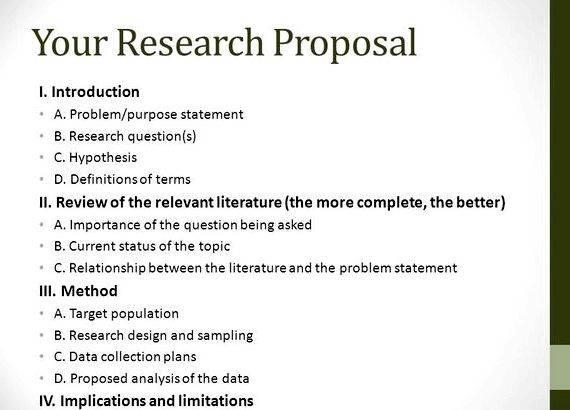
You will need to decide whether your paper should address your research investigation focus in the form of a research question(s) or through a hypothesis.
Use this Powerpoint to review the characteristics of both forms .
Qualitative approaches to research design generally use questions as their focus. Because qualitative studies start an investigation with a concept, but use inductive methods to reach a final conclusion about the research, most qualitative designs do not start with a hypothesis. Writing a research question is usually the better choice for this kind of study.
Quantitative approaches to research design generally use the test of a hypothesis as the frame for the methodology. Because quantitative studies use deductive reasoning through scientific methods to test a hypothesis, questions may be appropriate to focus a study, but a clear hypotheses should be included in the actual proposal.
Consulting a methodology lecture’s Powerpoint or list of characteristics could help you think about the different characteristics of your study in a structured way. This will then help you to clarify which type of approach you will be taking, and whether you should write research questions or a hypothesis for your research proposal.
In the guide Crafting the Research Proposal: The Introduction, you will find a place to compose your research questions or hypothesis. Use the examples and the writing tips described below, and in the Powerpoints linked to this page, to help you to write your own research question or hypothesis.
Tips for Writing Research Questions
Be as specific as possible.
In some cases, you may make two or more research questions to cover a complex topic.
Be flexible.
For example, if you are studying the effects of sleep on reflexes, you might formulate the following research question: What are the effects of sleep on reflexes?
A similar question might be: Does sleep have an effect on reflexes? OR Is maximum reflex efficiency achieved after eight hours of sleep?

Remember: The goal of your research is to find the answer to the research question. Make sure that the question reflects your goals in its words and phrasing.
Use this tutorial if you are writing research questions for a qualitative design.
Tips for Writing Hypotheses
When you state your hypotheses, be sure that the content of the hypothesis matches the experimental procedure. What you write should be the best estimation of the outcome of the lab procedure. Along with the hypothesis, you should write several sentences which explain the scientific reasoning that led you to that hypothesis.
For example:
We hypothesize that the beavers in this study will choose trees that are small in circumference and closest to the water. Since the energy yield of tree species may vary significantly, we also hypothesize that beavers will show a preference for some species of trees over others regardless of circumference size or distance from the central area. (Statement of hypotheses) The optimal foraging theory and central place theory lead us to predict that beavers, like most herbivores, will maximize their net rate of energy intake per unit time. In order to maximize energy, beavers will choose trees that are closest to their central place (the water) and require the least retrieval cost.

Since beavers are trying to maximize energy, we hypothesized that they will tend to select some species of trees over others on the basis of nutritional value. (Brief explanation of the reasoning behind the hypotheses )
Here is another:
In the present study, we hypothesized that a subgroup of patients with HER2/neu-overexpressing breast cancer will also demonstrate an increase in activated Akt in their tumors. These patients will be resistant to chemotherapy and consequently this group of patients will have a shorter DFS and a poor OS. The activation of Akt in breast tumors could be a potential biologic factor that may partially explain the worse outcome in those minority women with breast cancer. Hence, our primary goals are to test whether pAkt over-expression in HER2/neu-overexpressing tumors led to poor outcome compared with HER2/neu-overexpressing tumors but with normal or low levels of pAkt, (b) to compare them to levels of pAkt in HER2/neu-negative tumors, and (c) to focus on African-American and Latina patients at our medical center, where these two populations have similar socioeconomic status and access to care. We postulate that the over-expression of pAkt will lead to poor outcome irrespective of ethnic or racial differences.
Use this tutorial to compose and check to be sure that you wrote an effective hypothesis.
Use this tutorial if you are writing a hypothesis for a qualitative design.
Use this tutorial to help you write different hypotheses for different types of quantitative designs.
Use this tutorial or this one if you are writing a hypothesis for a true experiment.
Complete your planning guide for this section.
Previous answers to this question
This is a preview of an assignment submitted on our website by a student. If you need help with this question or any assignment help, click on the order button below and get started. We guarantee authentic, quality, 100% plagiarism free work or your money back.
 Get The Answer
Get The Answer